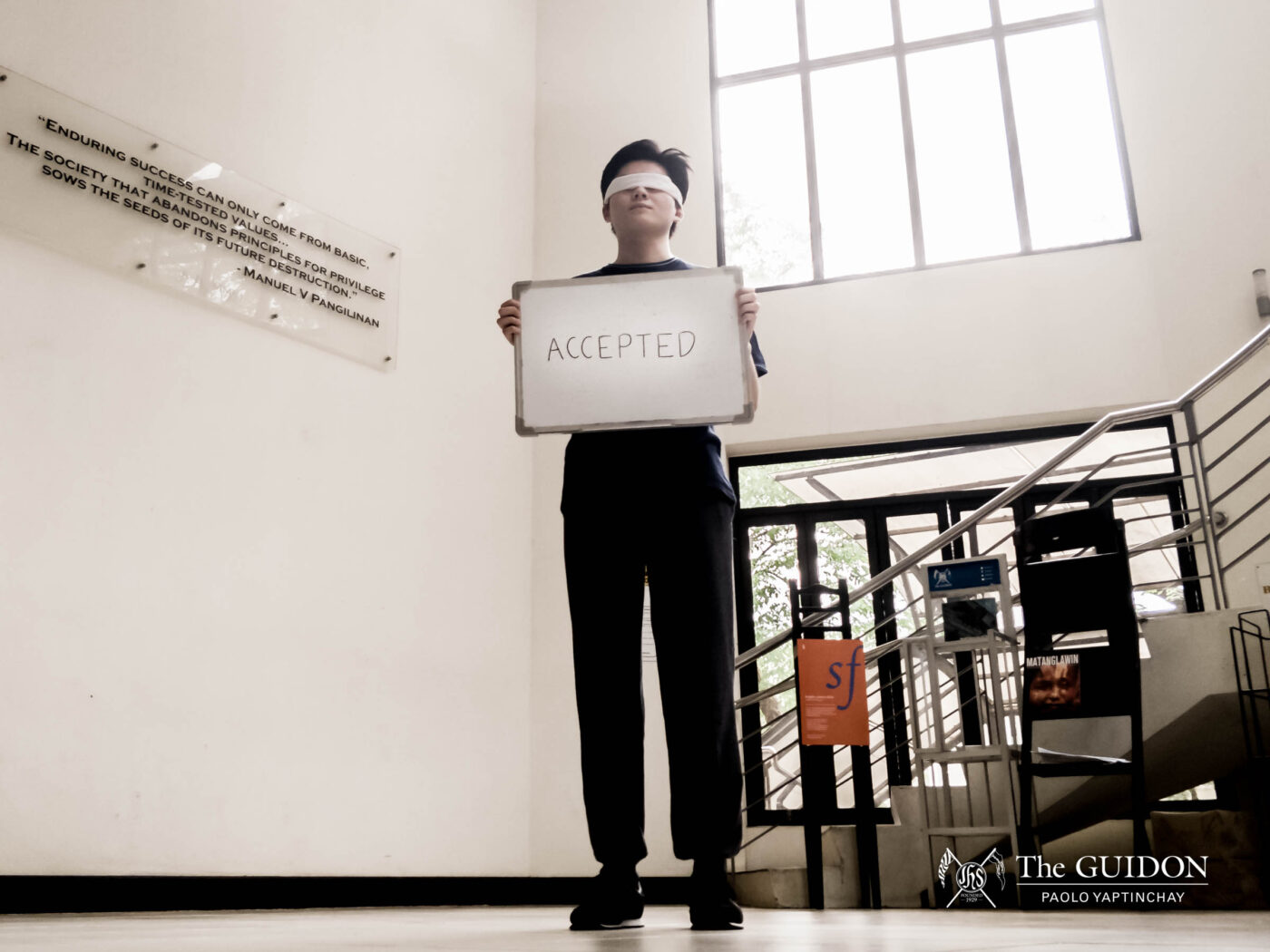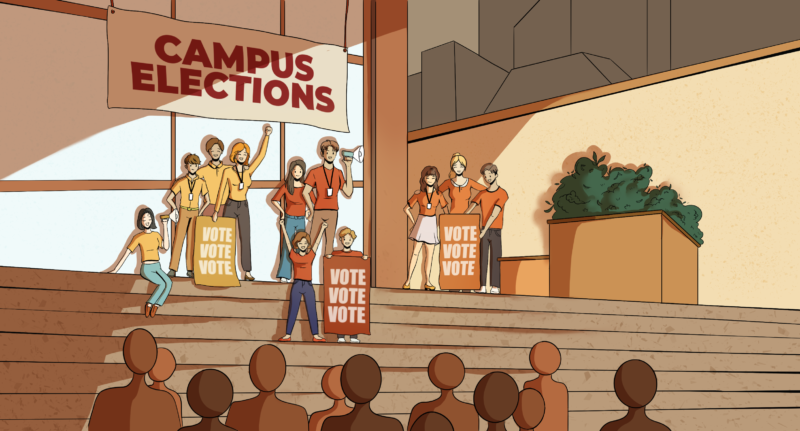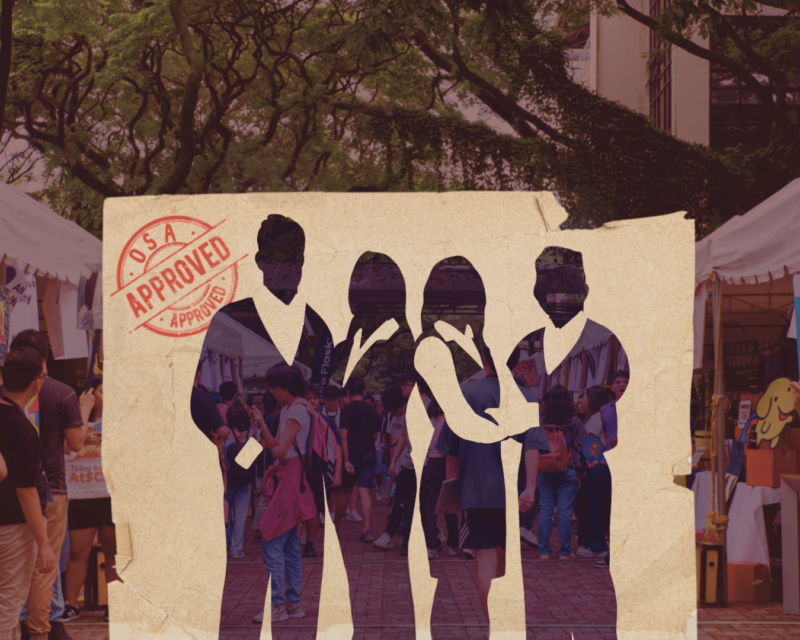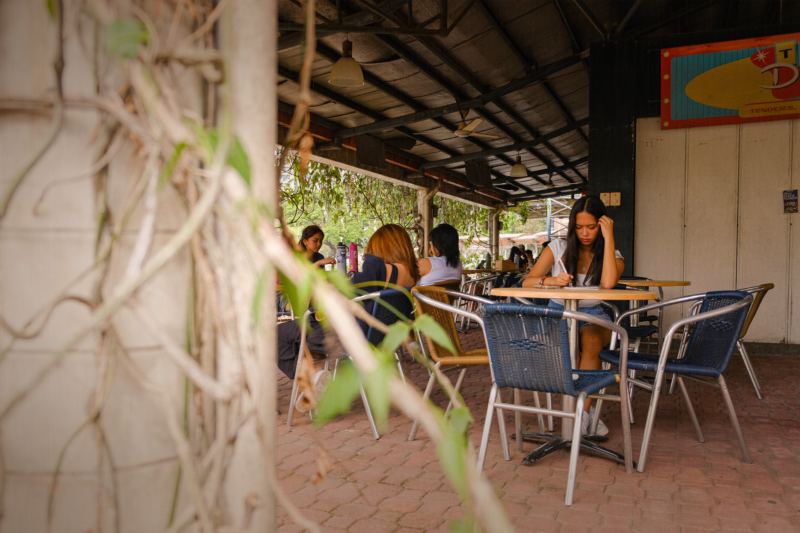On August 29, the Office of Student Activities (OSA) released guidelines in compliance with the newly-signed Republic Act 11053, or the Anti-Hazing Act of 2018. While cases that could be considered hazing are infrequent to begin with, these changes seek to make the campus more secure.
The Ateneo owes a large part of this hazing-free status to the absence of fraternities and sororities. While it is possible for these kinds of groups to be benevolent and philanthropic, the absence of them can be considered beneficial, as they have also been at the forefront of major hazing incidents in the country. The closest thing that the Ateneo has to fraternities are student organizations; but even then, they are still largely incomparable.
With that said, the practice of giving requirements and initiation rites to students who want to be a part of a particular organization is one aspect that the two share. As these application processes get more complex, it is likewise getting increasingly difficult to determine whether something can be considered hazing, especially when mental abuse is put into the picture. In this sense, perhaps the Ateneo is not quite as free or as safe from hazing as it may initially seem.
Body and mind
There are no direct references to hazing in the 2016 Edition of the Student Handbook. The closest ruling that can be applicable to cases of hazing involves Section D under the list of offenses, which briefly touches on acts that have some of the characteristics of hazing.
Other than this, the Handbook simply refers to the “laws of the land,” which is one of the bases for major disciplinary cases. With this, Republic Act 8049 or the original Anti-Hazing Act of 1995 comes into play. Section 1 of the law roughly defines hazing to be any kind of initiation rite for an organization that requires the applicant to go through “embarrassing or humiliating situation[s] […] or otherwise subjecting him to physical or psychological suffering or injury.”
However, even if non-physical effects are present in this definition, for the most part the law only penalizes hazing rites that result in physical injury or death. In fact, under Sections 2 and 3, it even allows the initiation rites to push through, provided that the school authorities are duly notified and that school representatives are present during the initiation.
The efficacy of this law has thus been a consistent topic for debate over the years especially as violent practices and deaths due to hazing continue to occur. The case of late University of Santo Tomas law student Horacio “Atio” Castillo III comes to mind, as even if it has led to a review of the Anti-Hazing Act, it still does not have any guilty verdicts even after months of hearings and investigations.
Until now, schools such as the University of the Philippines have sustained some level of notoriety for the presence of fraternities; something which Loyola Schools Office of Guidance and Counseling Director Gary Faustino, MA, RPsy claims to have had several encounters with during his college days.
“There [was] one fraternity…you have to create some sort of a boldness [so] they ask you to do weird things. So you come to school dressed up with a skirt and lipstick if you’re male,” he recalls. Faustino notes further that this is arguably on the tamer side of things, as other fraternities have delved into more outlandish practices.
He says that this is considerably a hazing rite to passers-by and other witnesses, and yet in the context of the law, this may be up for debate. The more extreme rituals such as violent initiation rites may be considered hazing immediately, but for other practices, hazing is not immediately apparent as the extent of the psychological suffering is not clearly defined. The law is thus being challenged not just for its evident inefficacy in handling major cases, but also in the vagueness and confusion that ensues when looking at practices with less pronounced effects.
For organizations in the Ateneo, it is important to consider this in the context of the recruitment process. Whereas before, one would simply have to sign up on a sheet of paper, recruitments nowadays are a large departure from this simple system. Aside from signing up, one may be required to go through a gamut of different requirements such as performing, simulations, and making videos. The degree of complexity varies, but in general, students have a great deal of freedom in tweaking the recruitment process as they see fit.
The thing that makes this a relevant concern is not so much in what people are doing now, but in what could potentially be done with it. Though unlikely, it is very much still possible for hazing to occur by way of acts that may not be outright abusive, but still exert some form of physical or psychological suffering on the participant.
Method to the madness
There is a very strict process when it comes to hazing-related incidents that occur within the University. As such, when it comes to suspected incidents of hazing, Office for Student Services (OSS) Director Cholo Mallillin states that, “we have to define it under the law […] Because in order for it to be hazing, it has to be a condition for entry into a certain group.”
If the case is hazing, then the OSS investigates the situation as if it was a normal disturbance to the University. The Ateneo Code of Conduct, which can be found in the student handbook, is the primary reference at this point, as cases may fall under “engaging in endangering behavior,” “physical assault,” or other offenses.
The regular investigation procedures apply, such as the requirement of a letter of complaint, signed testimonies from witnesses, CCTV footage, and other forms of evidence. The OSS then asks for a statement from the accused to listen to their account of the events, and this information is handed to the Discipline Office for processing. They then notify the accused of the charges set against them and the date of the hearing with the Disciplinary Committee. This committee provides the appropriate reformation programs to the guilty parties.
Since the beginning of Mallillin’s work with the OSS in 2009, there reportedly have been no defined hazing incidents that have occured within the Ateneo. Although some cases have been reported over the years, the OSS has deemed them as “endangering behavior” due to them being interpreted as not falling completely under the definitions of the law for hazing.
“From all of the accounts we took [from one certain report,] we were able to get statements from all of the people involved. The people who complained, the people who were supposed to oversee the activity, people in charge of the person who instigated this activity, which is basically endangering behavior,” he said.
“So if the question is, have we had any prior incidents of hazing at least so as I know from the time that I started with the [Associate Dean for Student Affairs] pa, back in 2009, wala pala talagang what appeared to be hazing or was covered by this law.”
Underlying intentions
There is no clear-cut way to determine whether minor cases of physical or psychological suffering count as hazing or not. The key to being able to judge fairly, as Faustino suggests, lies not just in the act but also in its purpose. Evidently, hazing exists primarily as a means to create some form of investment or achievement with regards to the recruitment process. However, issues begin to surface once physical force or embarrassment are used as the means to achieve these goals.
Faustino cites the Philippine Military Academy (PMA) as an example. “In PMA, you’re talking about soldiers, so [the physical stress is] part and parcel of their training. However, it [can be] taken too far,” he says.
To this end, Ateneo organizations have done a good job of remaining relatively hazing-free even with the degree of freedom with regards to their recruitment. It is no secret that some organizations have physically and mentally taxing requirements, but evidently it seems fair insofar as they are reasonable and their purposes are not misaligned by malicious intent. The OSA screening process for org activities helps in this regard, as it ensures that the orgs do not deviate from their principles or conduct a potentially harmful act. “Before any activity is allowed, we look at its purpose, we look at its goals, what does it want to do, and then we look at what’s the element of that activity. So if there are things not related to the goal, then the formator can actually see it,” says OSA Director Ralph Jacinto Quiblat.
However, there is still an underlying problem in that there is no guarantee that people will not overstep their bounds or go through the loopholes of the system, whether or not they are aware that they are doing so. In fact, several concerns have been raised in the past with regards to some org recruitment practices that have questionable intent or are borderline unreasonable.
Intervention
Thus, despite being outlawed in Ateneo, cases of organization-related abuse continue to occur. Mallillin suspects that most of these cases are “bad judgement, misinformation, meaning people are misinformed about how they should treat their fellow students, and or gaining undue advantage over others… In short, power tripping.”
On a previous case, Mallillin describes what a group of officers did to a female officer: “The people in charge of the activity did not give her money, did not tell her where she was, kasi naka-blindfold sila eh. So sinakay lang nila sa taxi and they let her go. She had no idea where she was… So nakasuhan ‘yon.”
(The people in charge of the activity did not give her money, did not tell her where she was, and she was blindfolded. So they made her ride a taxi and they let her go. She had no idea where she was… So she filed a case against them [for endangering behavior].)
According to Mallillin, the current discipline process within the Ateneo is “restorative […] not punitive.” As for the reasons why, Mallillin stated that those guilty of these offenses have an “adequate amount of time to reflect” on what they had done.
This further ties in with the contextual punishments that the Ateneo hands out. Mallillin cites the planking craze a few years ago. Although planking in restricted areas is still “endangering behavior,” the punishment between that and the case cited above was very different; while the planking craze led to reformation through community service, the case with the female officer led to the president of that organization being suspended.
Therese Bico, former ombudsman at the Office of the Ombudsman, suggests to have a person assigned to activities to ensure that the flow of the program is followed. However, she believes that ultimately, the responsibility remains on the students to prevent these cases from occuring.
The work done by both the administration and student-led organizations has kept the University environment hazing-free, but both parties continually have a role to play in keeping it this way.







